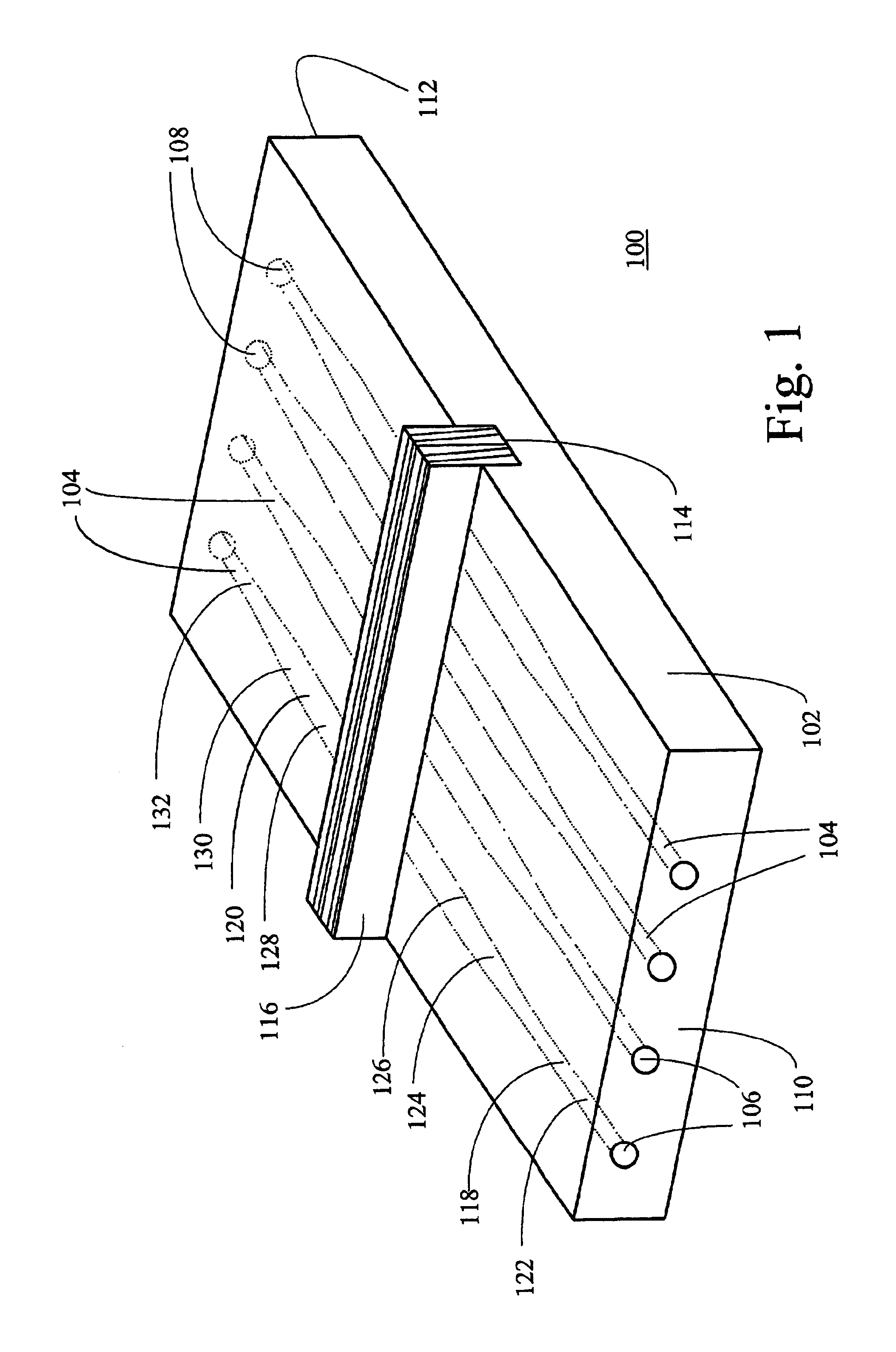Integrated optical isolator array
a technology of optical isolators and arrays, applied in the field of non-reciprocal optical devices, can solve the problems of high cost and production volume limitations, difficulty in automating the placement and alignment of optical fibers and any separate collimating elements, and increase manufacturing costs, so as to improve the quality of optical fibers and reduce noise , the effect of reducing the cost of manufactur
- Summary
- Abstract
- Description
- Claims
- Application Information
AI Technical Summary
Benefits of technology
Problems solved by technology
Method used
Image
Examples
Embodiment Construction
[0021]FIG. 1 illustrates the general structure of an integrated isolator array 100 in accordance with a first embodiment of the invention. Isolator array 100 includes an optical substrate 102 having a plurality of laterally spaced apart waveguides (individually and collectively denoted as 104) formed therein. The waveguides terminate at input and output ports 106 and 108 located at the opposite end faces 110 and 112 of substrate 102. The waveguides may be optically coupled via the input and output ports to corresponding arrays of input and output optical fibers (not shown), which carry input and output light signals. Precise positioning and alignment of the optical fiber arrays relative to the input and output ports may be accomplished by use of v-grooved or similar structures, which are known in the art and will not be discussed herein.
[0022]Optical substrate 102 may be fabricated from lithium niobate, a glass, or other material (or combination of materials) which is optically tran...
PUM
 Login to View More
Login to View More Abstract
Description
Claims
Application Information
 Login to View More
Login to View More - R&D
- Intellectual Property
- Life Sciences
- Materials
- Tech Scout
- Unparalleled Data Quality
- Higher Quality Content
- 60% Fewer Hallucinations
Browse by: Latest US Patents, China's latest patents, Technical Efficacy Thesaurus, Application Domain, Technology Topic, Popular Technical Reports.
© 2025 PatSnap. All rights reserved.Legal|Privacy policy|Modern Slavery Act Transparency Statement|Sitemap|About US| Contact US: help@patsnap.com



